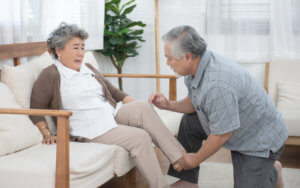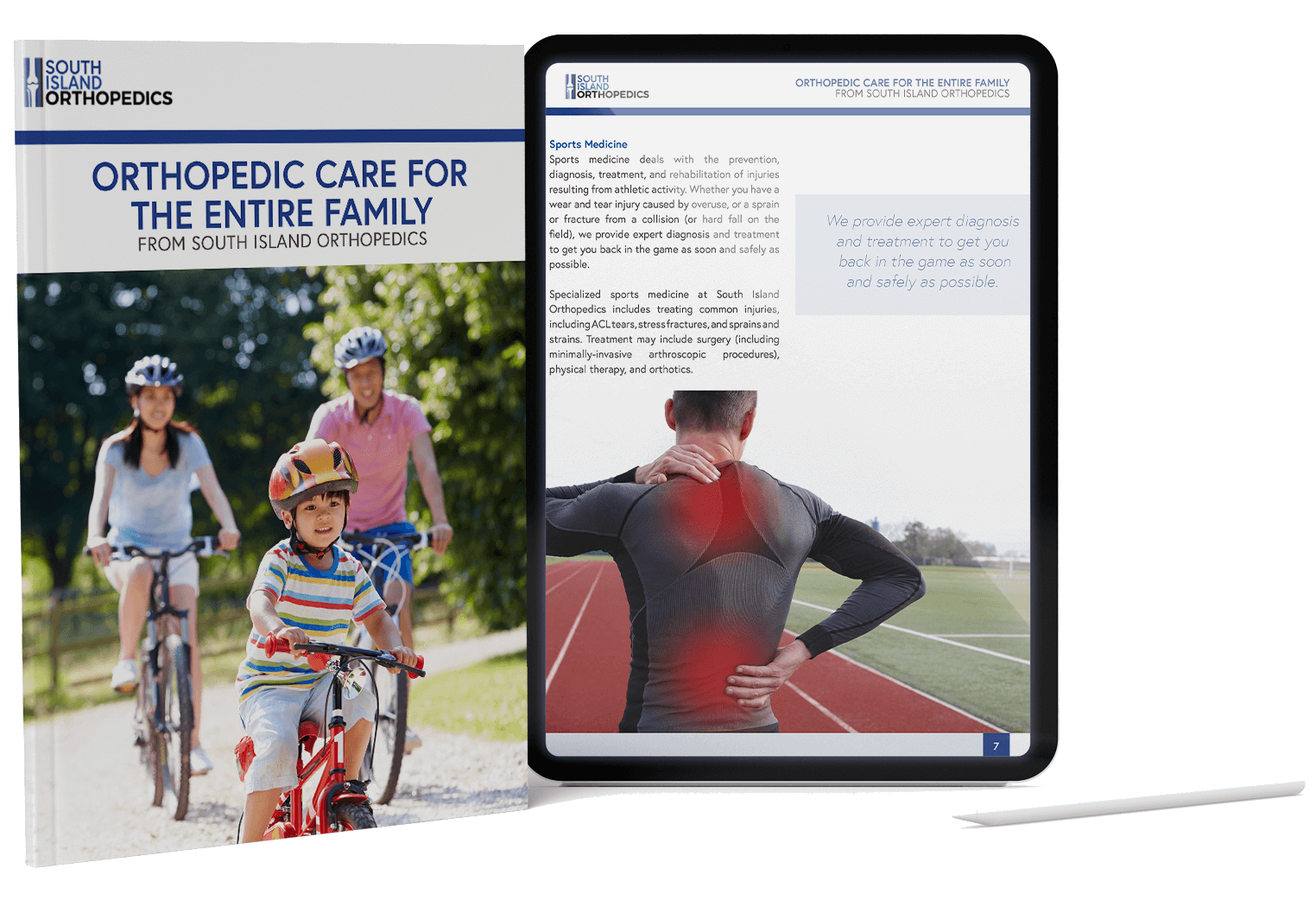Learn the Signs of a Blood Clot After Injury (It Could Save Your Life)
Although blood clots are a common risk of surgery, that isn’t the only time you may be in danger of developing one. Blood clots after injury are also possible; research shows that seemingly minor injuries cause about 1 in 13 blood clots. This statistic makes it even more important to seek medical treatment after an injury and follow care instructions to ensure a full recovery. 
The board-certified orthopedic surgeons at South Island Orthopedics have seen patients develop blood clots after injuries. If not treated promptly, this can be dangerous or even fatal. Being aware of the symptoms of a blood clot after injury and knowing when to see a doctor could potentially save your life, so keep reading to learn more about what to do when you sustain an injury.
Understanding Blood Clots After Injury
A bruise forms with many injuries — whether you fall, have hard contact with an object, break a bone, sprain the ligaments in a joint, or do something similar. Bruising occurs because of broken capillaries (tiny blood vessels) under the skin. Blood leaks out and pools, and the lack of oxygen causes it to turn dark blue or purple, giving bruises their distinct appearance.
In time, the blood naturally coagulates and forms clots (also known as hematomas) to stop the bleeding. These blood clots located outside of the blood vessels are usually harmless and disappear as the injury heals.
Sometimes, though, an injury can cause damage deeper under your skin or in the blood vessels themselves. Such damage may even be within a muscle or organ, which can be dangerous and even life-threatening, as the clot can impede oxygen and blood flow into the area. Or, the blood clots that form after an injury can be larger than necessary or migrate to uninjured areas.
It’s especially dangerous when the platelets coagulate and form a clot inside a blood vessel. If the clot migrates to the arteries leading to the heart or brain, it can cause a stroke or heart attack. Blood clots can also potentially affect the lungs and intestines, while clots deep in the legs can cause deep vein thrombosis. This dangerous condition can lead to pulmonary embolism or permanent damage to leg veins.
Recognizing the Signs of a Blood Clot After a Bruise
Bruises are very common. Sometimes, you can get a bruise from even a minor impact, such as bumping into a table, and not remembering what happened or why you have a bruise.
However, when you sustain an injury, even a seemingly minor one, recognizing the early-stage blood clot symptoms and receiving treatment prevents complications. Some of the most common symptoms include:
clot symptoms and receiving treatment prevents complications. Some of the most common symptoms include:
- A bruise that lasts longer than two weeks
- A lump under the skin
- Pain. Sometimes, the symptoms of a blood clot after injury to the leg mimic those of other conditions, like a charley horse or shin splints. A sudden recurrence of pain in the injured area, or pain that doesn’t respond to typical relief measures, requires further investigation.
- Swelling of the affected area
- Warmth around the injury
- Redness or discoloration
- Protruding veins
If a blood clot travels through your blood vessels, you may experience other symptoms that require emergency medical care. Call your doctor or go to the emergency room right away if you experience pain or difficulty breathing, shortness of breath, chest pain, rapid heart rate, or coughing up blood.
Are some people more susceptible to blood clots after an injury?
Certain people are at a greater risk of developing a blood clot after an injury. They should see a doctor any time they have pain, a severe bruise, or other symptoms. Older people, especially those with a blood clotting disorder or a family history of blood clots, smokers, and those taking hormones (birth control or hormone therapy), have increased risk.
Treating and Preventing Blood Clots After Injury
Any time you have a painful injury, even if you don’t think you have a fractured bone or sprain, see a physician for an evaluation. Most bruises don’t require treatment beyond ice packs for the first 24-48 hours, followed by heat as needed to alleviate discomfort. However, a medical evaluation will rule out any other serious injuries and help ensure healing.
It’s even more important to see a doctor as soon as possible if you have any signs of a blood clot after a bruise. Imaging tests, including ultrasounds, MRI, and CT scans, can identify blood clots both deep within the tissues and organs, as well as in or near blood vessels.
bruise. Imaging tests, including ultrasounds, MRI, and CT scans, can identify blood clots both deep within the tissues and organs, as well as in or near blood vessels.
When a doctor finds a blood clot, treatment typically involves blood-thinning medications, and in some cases, surgical removal of the clot. You may need to continue taking medication to prevent future clots, as well.
If you are injured and develop a bruise, following your doctor’s instructions for applying ice and heat is one of the best ways to prevent a blood clot from forming. Movement is also essential, especially when you have a leg injury. Getting up and moving around every hour, even for a few minutes, can help increase circulation and prevent blood clots. Staying hydrated and avoiding alcohol also help reduce the risk of a medical emergency.
Injury Treatment at South Island Orthopedics
If you’re injured, whether on the sports field or just in the course of regular activity, make an appointment to see an orthopedic specialist at South island Orthopedics. Prompt care can help accelerate healing and reduce the risk of a life-threatening emergency. Request an appointment by clicking here, or call one of our three convenient locations in Woodbury, Cedarhurst, or Rockville Centre to schedule a visit. South Island Orthopedics also offers walk-in appointments to our Urgent Care locations if you are experiencing early-stage blood clot symptoms.
South Island Orthopedics’ Guide to Bone and Joint Care

Posted in: General & Pediatric Orthopaedic Care
